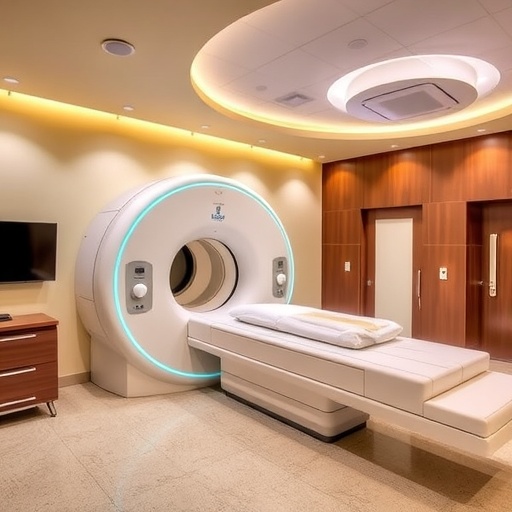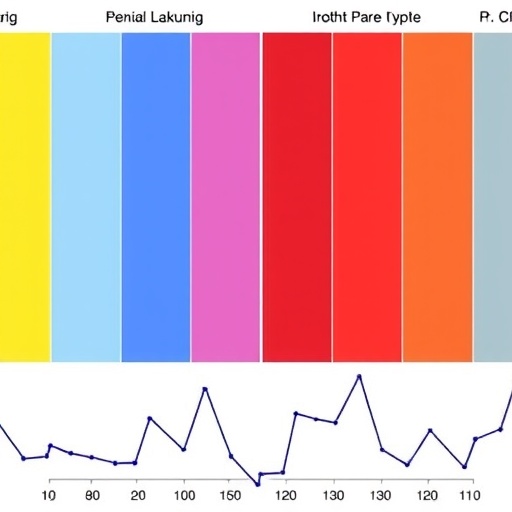The University of Utah’s Huntsman Cancer Institute (HCI) is spearheading a transformative advancement in cancer treatment with the expansion of its acclaimed Senator Orrin G. Hatch Proton Therapy Center. This expansion involves the construction of a state-of-the-art second proton therapy vault, effectively doubling the capacity for delivering this highly precise and innovative form of radiation treatment to patients across the Mountain West region. Since opening in 2021 as the first and only proton therapy center in this vast geographic area, the original vault at Huntsman has provided cutting-edge oncology care to patients hailing from Utah, Idaho, Montana, Nevada, Wyoming, and beyond.
Proton therapy represents a significant leap forward in radiation oncology, diverging fundamentally from conventional photon-based radiotherapy by using charged particles—protons—to eradicate cancerous cells. The key technical advantage of proton therapy lies in the Bragg peak phenomenon, where protons deposit the majority of their energy at a specific depth corresponding to the tumor site, thereby sparing adjacent healthy tissues and vital organs from unnecessary radiation exposure. This precision minimizes collateral damage and reduces severe side effects, a crucial consideration particularly for pediatric patients and tumors located near critical structures such as the brain and spinal cord.
The impending construction encompasses an approximately 9,000-square-foot, three-story cement vault meticulously engineered to house the intricate machinery and shielding required for proton beam generation and delivery. Strategically positioned adjacent to the existing unit on the University of Utah campus, this expansion is poised to enhance the center’s treatment throughput dramatically. Amit Maity, MD, PhD, FASTRO, professor and chair of the Department of Radiation Oncology, emphasizes how this growth will widen access to proton therapy, enabling Huntsman to transcend previous patient volume constraints and extend the therapy to a broader spectrum of cancer types.
.adsslot_HIMLvxz90S{width:728px !important;height:90px !important;}
@media(max-width:1199px){ .adsslot_HIMLvxz90S{width:468px !important;height:60px !important;}
}
@media(max-width:767px){ .adsslot_HIMLvxz90S{width:320px !important;height:50px !important;}
}
ADVERTISEMENT
Clinically, proton therapy is distinct in its capacity to conform the radiation dose to the three-dimensional contours of a tumor with remarkable fidelity. Unlike photon beams which deposit energy along their path—often irradiating healthy tissues before and after the target—protons halt abruptly upon delivering their therapeutic dose. This dosimetric superiority translates into measurable benefits, including reduced risks of secondary malignancies and chronic toxicities. For pediatric oncology, where patients have a lifetime ahead and heightened sensitivity to radiation effects, proton therapy’s targeted approach is invaluable.
Since its inauguration, the Huntsman Proton Therapy Center has demonstrated success in treating a diverse patient cohort, including roughly one-third pediatric cases. The current expansion mirrors a broader national trend recognizing proton therapy’s transformative potential. Notably, the United States hosts only 46 such centers, a relatively limited network given the prevalence of cancer and the therapy’s growing endorsement in clinical guidelines. The closest alternative proton centers to Salt Lake City are located in Phoenix, Seattle, and San Diego—facilities often overwhelmed by referral overflow from the Mountain West.
This geographic scarcity imposes significant logistic and financial burdens on patients, who frequently face grueling travel distances and fragmented care coordination. The new vault’s capacity promises to mitigate these challenges by offering localized advanced radiation treatment, reducing patient displacement, and bolstering kontinuität in multidisciplinary oncology management. This model aligns with Huntsman’s mission to deliver cutting-edge care within the communities it serves, fostering equity and accessibility in cancer treatment.
Matthew Poppe, MD, clinical director of the Proton Therapy Center and an investigator at Huntsman, outlines how doubling treatment availability will democratize access to this technology, allowing more patients with nuanced clinical presentations to benefit. The newly constructed vault will be outfitted with next-generation proton delivery systems, including pencil beam scanning, that facilitate intensity-modulated proton therapy (IMPT). This allows for even greater precision, accounting for tumor motion and anatomical changes over the course of treatment through sophisticated treatment planning algorithms and adaptive radiotherapy protocols.
From an operational perspective, the vault’s construction is an intricate engineering feat, requiring extensive radiation shielding, vibration isolation, and environmental controls to ensure equipment stability and patient safety. Such infrastructure is essential to the maintenance of beamline integrity and the accurate delivery of prescribed dose distributions. Furthermore, integration with the hospital’s electronic medical record and imaging systems enhances real-time treatment adaptation and quality assurance.
Mary Beckerle, PhD, CEO of Huntsman Cancer Institute, affirms that the investment underscores the center’s leadership in innovation and patient-centric care. The upcoming facility not only exemplifies technical excellence but also symbolizes a commitment to the comprehensive needs of cancer patients, emphasizing hope, healing, and transformative outcomes. Construction is slated for completion within two and a half years, setting the stage for an era in which the Mountain West can stand alongside other major metropolitan centers offering world-class proton therapy.
As Huntsman expands its proton therapy capabilities, the broader oncology community watches closely, anticipating novel clinical trials and translational research initiatives integrating molecular profiling, radiobiology insights, and advanced imaging modalities. Such endeavors aim to refine patient selection criteria, maximize therapeutic ratio, and elucidate mechanisms of proton-induced tumor control. Ultimately, this expansion may pave the way for personalized radiation oncology paradigms tailored to individual tumor biology and microenvironment dynamics.
In conclusion, the Huntsman Cancer Institute’s commitment to doubling its proton therapy capacity is more than an infrastructure upgrade—it is a decisive stride toward regional leadership in cutting-edge cancer treatment. By enhancing precision radiation therapy access, the institute advances the frontier of oncologic care, reducing side effects, improving quality of life, and fostering hope for countless patients and families across the Mountain West.
Subject of Research: Expansion of proton therapy capacity and application at Huntsman Cancer Institute
Article Title: Transforming Cancer Care in the Mountain West: Expansion of Proton Therapy at Huntsman Cancer Institute
News Publication Date: Not explicitly stated in the source
Web References:
https://healthcare.utah.edu/huntsmancancerinstitute/
https://healthcare.utah.edu/huntsmancancerinstitute/treatment/proton-therapy
https://proton-therapy.org/
Image Credits: Credit: Huntsman Cancer Institute
Keywords: Cancer, Brain cancer, Proton therapy, Radiation oncology, Pediatric cancer, Precision medicine
Tags: Bragg peak phenomenon in proton therapycancer care in Utah and surrounding statescutting-edge cancer treatment optionsHuntsman Cancer Institute advancementsMountain West cancer treatmentoncology care for pediatric patientspatient capacity increaseprecision radiation treatmentproton therapy advantagesproton therapy center expansionradiation oncology innovationsstate-of-the-art proton therapy technology





